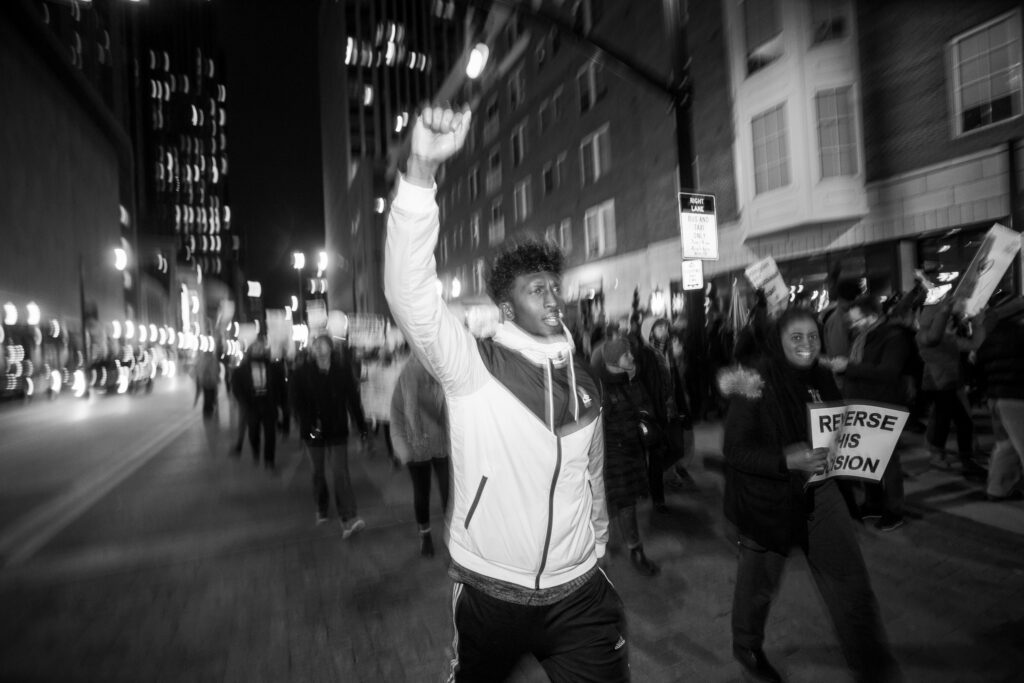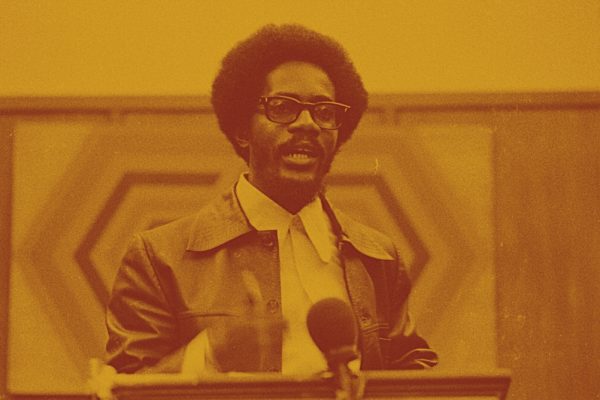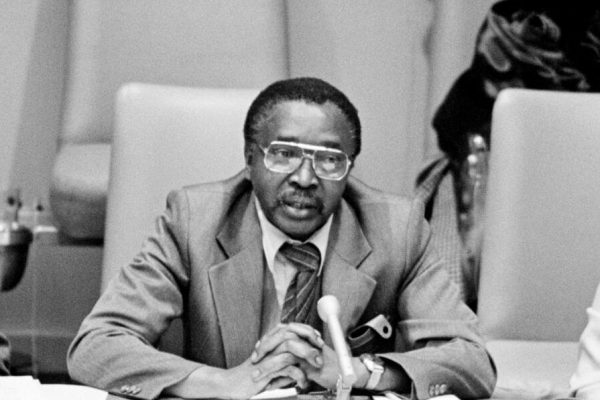Editor's Note: This essay is a follow-up to “Trump Says Go Back, We Say Fight Back,” written in the days following the 2016 U.S. election.
Donald J. Trump’s election was a national trauma, an epic catastrophe that has left millions in the United States and around the world in a state of utter shock, uncertainty, deep depression, and genuine fear. . . . But the outcome should not have surprised us.
I wrote this a year ago and still believe it to be true, but it seems like each day, each week, many of us are re-traumatized by the outrageous behavior of our president and his inner circle. So while the outcome of the election should not have surprised us, the consequences of a Trump administration have proven to be worse than even I had imagined. Yet, as my own anxiety levels rise, most of my liberal friends have begun to calm down, taking solace in the fact that Trump cannot govern or that the investigation into his campaign’s collusion with Russia will lead to impeachment. This kind of complacency is very dangerous. Trump’s inability to govern actually creates the kind of chaos that allows for emergency measures and executive orders that further concentrate power in his hands, justifying war—at home and abroad. It opens the door to fascism.
We are not facing an unexpected crisis in an otherwise well-oiled democracy. This kind of complacency opens the door to fascism.
What about the massive resistance following Trump’s election? Obviously we have witnessed an entire year of protests and demonstrations, though they tended to be more isolated and focused, and often quite militant, such as Refuse Fascism’s recent multi-city campaign to demand bringing down the Trump administration.
However, what came to be seen as the “resistance” found its largest and loudest expression in the counter-inaugural demonstrations. These were powerful, inspiring, and problematic. We know that in some instances, the anti-racist critiques offered by women of color were suppressed or marginalized in the name of maintaining “unity”; speakers had more to say about Donald Trump and his behavior than the broader political challenges ahead; and the liberals who steered these high-profile events pushed the message that Hillary Clinton was the rightful victor, the true heir to the throne. This is the other side of normalization: Trump is the outlier. Get rid of him and return to politics as normal. The Dutch social theorist Willem Schinkel best describes this phenomenon: “There appears to be a lack of political imagination beyond crisis recovery and beyond politics as problem management.”
As I tried to suggest a year ago, we are not facing an aberration, an unexpected crisis in a system that is otherwise a well-oiled democracy. Too many liberals smugly dismiss the Republican Party as “dysfunctional” and turn a blind eye to the Democrats. But as we recently learned, my description of Democratic leadership as “thoroughly bankrupt” proved true, quite literally. We now know that the Democratic National Committee undermined the Bernie Sanders campaign, struck a deal with the Clinton people to push her candidacy in exchange for a financial bailout, that Clinton took for granted constituencies of color in battleground states which could have changed the outcome of the election, and that the Democrats simply refused to investigate the wholesale disenfranchisement of voters in Detroit and elsewhere.
Trump and his regime are not seeking normalization. Like fascists everywhere, they thrive on the abnormal, on the chaotic, on the symbolic.
We worried about the “normalization” of the Trump regime, perhaps to our detriment. These people are not seeking normalization. Like fascists everywhere, they thrive on the abnormal, on the chaotic, on the symbolic. Violence continues to bubble up from below, in the marches and terrorist attacks by white supremacists and the so-called alt-right, in mass shootings, and in the random attacks that the administration is quick to prosecute within its xenophobic war on terror.
But there is hope, and I don’t mean impeachment or a Democratic sweep of the House and Senate in the midterm elections. I argued a year ago that we need a transformative, multiracial movement committed to “dismantling the oppressive regimes of racism, heteropatriarchy, empire, and class exploitation that is at the root of inequality, precarity, materialism, and violence in many forms.” Such movements are emerging now, and they are coming from the South. One source is the far South, which is to say Puerto Rico. The combination of Puerto Rico’s debt crisis, the neoliberal stripping of assets, resources, and democracy, and the devastation of hurricanes Irma and Maria, has turned the island into a global site of resistance. Even before hurricane season, Puerto Ricans had taken to the streets to protest austerity measures, unemployment, school closures, rising debt, and the environmental catastrophe caused by the island’s only coal-fire power plant in the town of Peñuelas. The slow and inadequate response on the part of the Federal Emergency Management Association (FEMA) and the federal government generally has only fanned the flames of opposition, as corporate interests look at the collapse of the power grid as an “opportunity” to privatize PREPA (Puerto Rico Electric and Power Authority), the largest public utility company in the United States. Students and trade unions, groups like Citizen Front for Auditing the Debt on the island, and Defend Puerto Rico, Diaspora en Resistencia, and Call to Action on Puerto Rico in the diaspora are just a few of the movements resisting neoliberal and neocolonial rule.
Transformative resistance movements are emerging from the South, including the far South, which is to say Puerto Rico.
Another source is the ongoing southern freedom movement in the form of Repairers of the Breach, founded by Reverend William J. Barber and Dr. Liz Theoharis. They have launched a new poor people’s campaign modeled on Dr. King’s nonviolent resistance to militarism, racism, extreme materialism, as well as environmental destruction, and informed by a radical social gospel of justice and redistribution. Their goal is to build a multiracial movement committed to nonviolent civil disobedience to fight for a moral economy—a strong social safety net, a living wage for all, decent housing, healthcare and education, and a robust and functional democracy. Next year the campaign will conduct forty days of action in twenty-five states, with at least a thousand people participating in each action.
There are other movements, to be sure, but now more than ever we have to do much more than fight back, we have to fight for the world that could liberate and sustain us all when Trump is gone.








